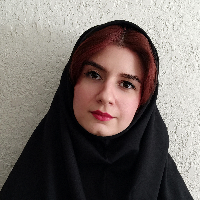A Comparative Study on the Motifs and Types of Needlework in the Clothing of Men and Women of the Qajar Court
The evolution of clothing in the history of the Qajar period in Iran is considered distinct due to the extensive cultural and social changes. During this period, as a result of the expansion of intercultural relations with other nations, especially the West, and the prevalence of fashion among courtiers, the desire for traditional Iranian clothing with beautiful and charming embellishments, especially a wide range of embroidery, still had its potential patrons, mostly courtiers. From this perspective, while explaining and analyzing the hidden concepts in the embroidered patterns for Qajar men and women, the following questions would be answered in this research: What concepts existed in the embroidered patterns of Qajar courtiers’ costumes? What are the differences between the embroidered patterns of men’s and women’s clothing in the Qajar era? This fundamental research adopts a qualitative approach and is comparative-analytical in its nature. The required data has been gathered through documentary studies and library resources and in some cases through field studies. The statistical population of the research has been selected by reviewing the paintings and matching them with a number of costumes in museums and private collections, left from the Qajar period. Having analyzed the findings, it could be concluded that the clothing of men and women in the Qajar court was not much different from each other and were generally divided into two categories: interior and exterior. Meanwhile, the woven ornaments would add to the dignity and beauty of costumes in accordance with the position and rank of the persons wearing them. Among the extant ornaments, motifs used were generally geometric and vegetal designs such flowers, plants and shrubs commonly seen in men’s and women’s clothing, which is mainly based on the traditional and religious beliefs of people.
-
سفارش قدسی
فصلنامه هنرهای تجسمی، شهریور 1403 -
Explaining the Place of Decoration in Artificial Arts from the Perspective of Islamic Wisdom
*
Journal of Rahppoye, Hekmat-e Honar, -
Structural Analysis and Comparison of Concepts in Safavid and Contemporary Engraving Works
Marjan Faghfouri *,
Journal of Iranian Handicrafts Studies, -
The Comparison of the Grotesque Painting of Mohammad Siah Qalam With the Otherworldly Characters of the Literary Text of Shahnameh Ferdowsi
Fatemeh Bazyari *, Madineh Agheli,
Journal of Industrial Arts, -
Feasibility study of the presence of traditional sewing in fourth-generation universities in Iran with a futures research approach
, *, Shahin Ebrahim Zade Pezeshki
Journal of Islamic Crafts,





